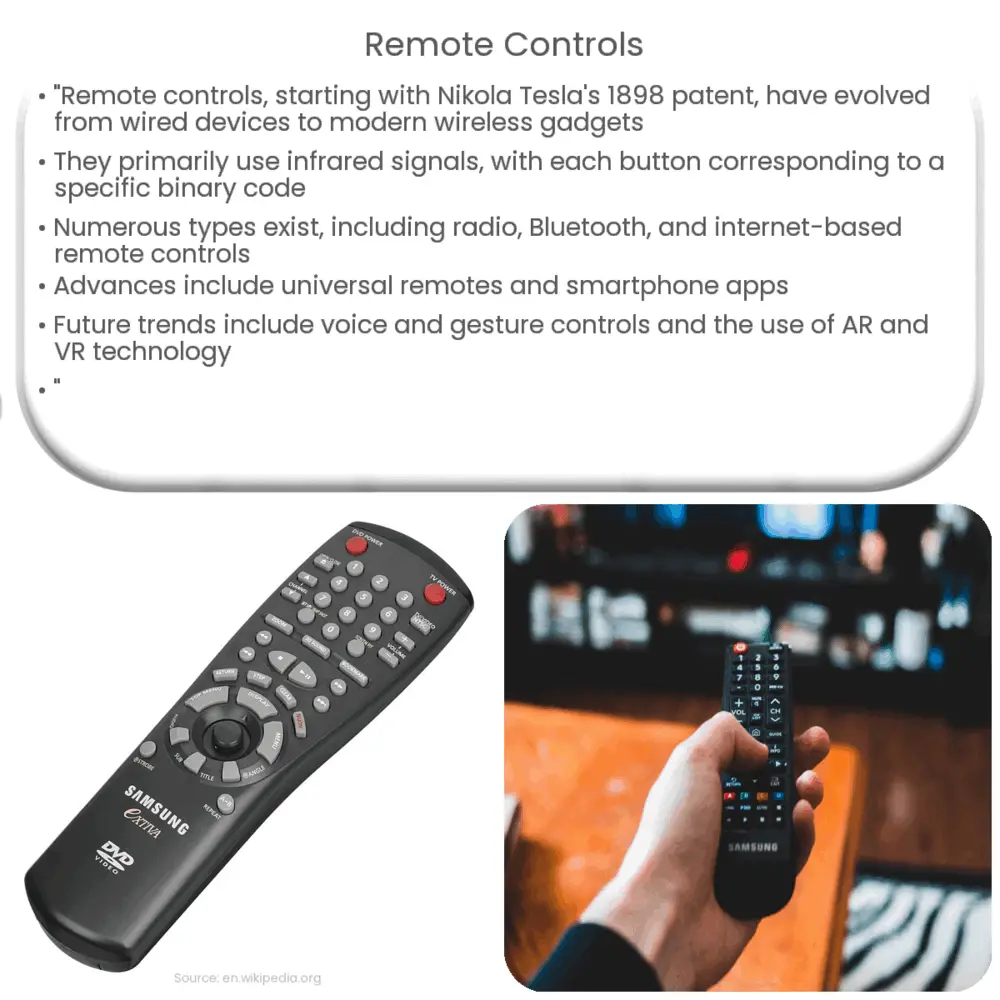Explore the fascinating world of remote controls, their history, types, and future prospects, including innovations like voice and gesture controls.

Understanding the World of Remote Controls
A remote control is a ubiquitous device in most homes today, serving as a convenient and essential tool for operating a plethora of electronic devices. They allow us to operate televisions, air conditioners, garage doors, and even some high-tech appliances without needing to physically interact with these devices.
A Brief History of Remote Controls
The concept of remote controls dates back to the late 19th century, with Nikola Tesla’s patent in 1898 for a device described as a “method of an apparatus for controlling mechanisms of moving vehicle or vehicles. However, it was not until the mid-20th century that remote controls became popular household items, beginning with television remotes.
- 1The first television remote control, dubbed “Lazy Bones,” was developed by Zenith Radio Corporation in 1950. It was a wired device, but despite its convenience, it posed a tripping hazard.
- 2Subsequent models like the “Flash-Matic” and the “Space Command” were wireless, using light and ultrasonic signals respectively.
Working Principle of Remote Controls
Modern remote controls primarily use infrared (IR) signals to send commands to the device they’re controlling. These IR signals are essentially pulses of non-visible light, which are interpreted by a sensor on the receiving device.
Each button on a remote control corresponds to a specific binary code. When you press a button, it sends this code as an IR signal. The receiving device has a matching set of codes, and when it recognizes a code, it performs the corresponding action.
Types of Remote Controls
Today, there are several types of remote controls available on the market. The most common type is the infrared remote control used for televisions and other consumer electronics. However, there are also:
- Radio remote controls, used for garage doors and car key fobs.
- Bluetooth remote controls, often used with modern smart devices.
- Internet-based remote controls, which can control smart devices over Wi-Fi.
The type of remote control that is best for you depends largely on your specific needs and the devices you are trying to control.
Universal Remote Controls
Another significant development in the world of remote controls is the advent of universal remote controls. As the name implies, these remotes are designed to control a wide range of devices. A single universal remote can replace the separate remotes for your television, DVD player, sound system, and other home electronics, making it a convenient all-in-one solution.
Smartphone Apps as Remote Controls
As smartphones become increasingly integral to our lives, they’ve also begun to take on the role of remote controls. Many electronics manufacturers now offer apps that allow you to control their devices from your smartphone. Additionally, smartphones often include technologies like Bluetooth and Wi-Fi, which can be used to control a wide range of smart home devices.
Future of Remote Controls
The future of remote controls is being shaped by advancements in technology. Voice control, for instance, is becoming more prevalent. Devices such as Amazon’s Echo or Google’s Home enable users to issue commands to their electronics simply by speaking. Gesture control is another emerging field, with systems able to interpret hand or body movements as commands.
- Imagine changing channels on your television with a wave of your hand, or adjusting the volume with a simple gesture.
- Moreover, with the rise of augmented and virtual reality, we may soon see remote controls that can be operated in three-dimensional space.
Conclusion
In conclusion, remote controls have come a long way since their inception, evolving from simple wired devices to sophisticated wireless gadgets. They have expanded their reach from televisions and radios to a wide array of appliances and even vehicles. The future promises even more innovation with the advent of voice and gesture-based controls and the integration of AR and VR technology. Ultimately, the goal remains the same – to make our interaction with technology as seamless and convenient as possible. And as we look forward, there’s no telling what exciting developments await us in the world of remote controls.

